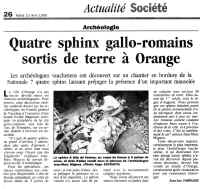


In the different parts that comprise this large dossier of information, we will attempt to demonstrate that the Tarot de Marseille is at the origin of almost all the Tarots of Europe; that it has existed since well before 1700, and that it is, among others, the agent of preserving the culture of the Master Builders and the Golden Section in a manner unique in Europe.
It is important to keep in mind that the Master Cartiers of Marseilles had a glorious reputation, well before the beginning of the 18th century, for making since time immemorial the best cards in the world.
The origin of the Tarot de Marseille is vigorously contested by the historians, according to the different authors who have written on the subject. Some claim for example that it came from Italy, because Tarot cards dating from the 15th century have been found in an old well…
Others maintain that the origin of Tarot is undoubtedly Egyptian, still others that it was a legacy left by the Cathars… So, how can we truly know?
"Alejandro Jodorowsky and I have always affirmed that the Tarot de Marseille was clearly born in Marseilles, and that it was absolutely not copied from a deck originating in another part of Europe. This thesis contradicts the claims of a good number of historians, who by way of proof, show us Tarot decks that date around two centuries earlier compared to the oldest decks available of the Tarot de Marseille…
Thus they conclude that the oldest decks are the ones that gave rise to the others. The Tarot de Marseille would bear its name then only because it was manufactured in Marseilles. However, if tomorrow someone discovers an old case containing even older cards coming from another country, these same historians will change their opinions and so forth…
I myself prefer to refer to more scientific methods, which all converge upon a real source of knowledge, that geographically would be localized, for 2000 years, to Marseilles and its surroundings. " Philippe Camoin
 So let us take an early Tarot de Marseille, whose most representative example is that of Nicolas Conver (1760). It is the only Tarot of Europe which contains, in the whole of its cards, the characteristic geometrical constructions that scrupulously respect techniques specific to the Roman Master-builders (the cathedral builders). This sacred geometry utilizes a particular number, phi = 1,618, called the Golden Section, and which was found in the architectural study of the pyramid of Cheops.
So let us take an early Tarot de Marseille, whose most representative example is that of Nicolas Conver (1760). It is the only Tarot of Europe which contains, in the whole of its cards, the characteristic geometrical constructions that scrupulously respect techniques specific to the Roman Master-builders (the cathedral builders). This sacred geometry utilizes a particular number, phi = 1,618, called the Golden Section, and which was found in the architectural study of the pyramid of Cheops.
 Similarly, a recent archaeological discovery from April 9, 1999 in Orange, France, of an important mausoleum from the 1st century C.E., which proves in an undeniable way that the winged sphinx, which we find in The Wheel of Fortune (Card X of the Tarot de Marseille) formed an integral part of the worships practised in Marseilles and its vicinity.
Similarly, a recent archaeological discovery from April 9, 1999 in Orange, France, of an important mausoleum from the 1st century C.E., which proves in an undeniable way that the winged sphinx, which we find in The Wheel of Fortune (Card X of the Tarot de Marseille) formed an integral part of the worships practised in Marseilles and its vicinity.
There also exist other subtle encodings, which form a coherent whole in the old Tarots de Marseille. These extremely complex encodings interconnect the whole of the cards as well by colour as by symbol. They are not found in the other old Tarots.
In short, we can say that:
Logged in visitors: 27